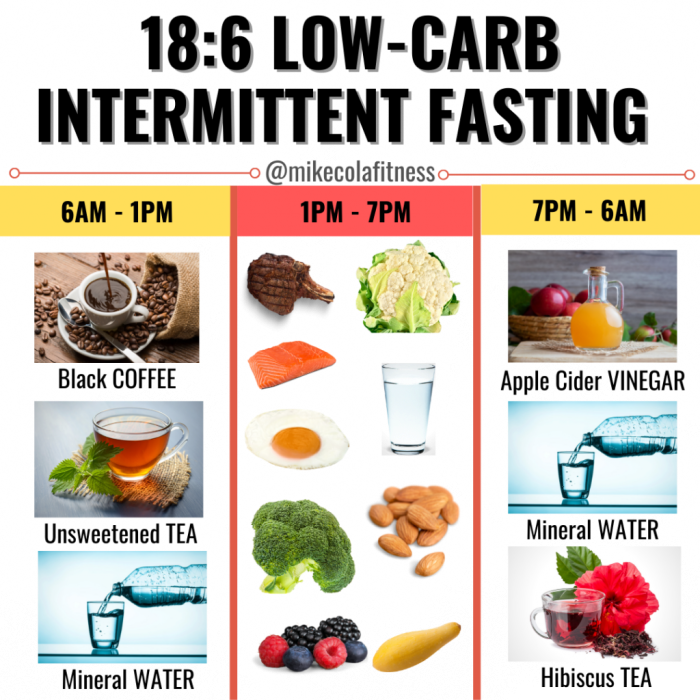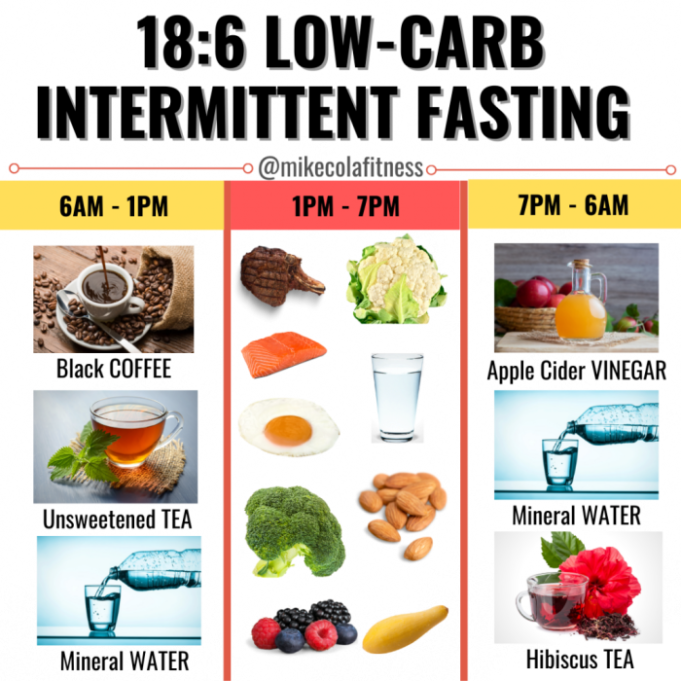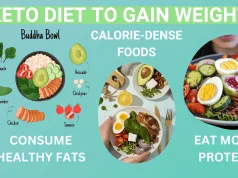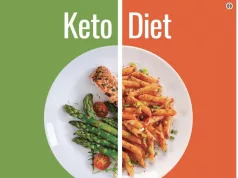How to fasting diet is a popular topic these days, and for good reason. Intermittent fasting, a form of fasting diet, has gained significant attention for its potential health benefits. It involves cycling between periods of eating and fasting, and can take various forms like alternate-day fasting or time-restricted feeding.
This guide delves into the world of fasting diets, exploring their mechanisms, benefits, and potential risks. We’ll discuss different types of fasting diets, provide practical tips for implementation, and address common myths and misconceptions. Whether you’re looking to lose weight, improve your health, or simply try something new, this comprehensive guide will equip you with the knowledge you need to make informed decisions about fasting diets.
Understanding Fasting Diets
Fasting diets have gained popularity in recent years as a potential weight-loss strategy and for their potential health benefits. They involve periods of abstaining from food, followed by periods of eating. These diets can be implemented in various ways, each with its unique characteristics and potential benefits.
Types of Fasting Diets
Fasting diets are categorized based on their duration and frequency. Here are some popular types:
- Intermittent Fasting (IF): This involves alternating between periods of eating and fasting on a regular schedule. Common IF methods include:
- Time-restricted feeding (TRF): This involves limiting your eating window to a specific period each day, such as 8 hours or 10 hours, and fasting for the rest of the day. For example, you might eat between 10 am and 6 pm and fast from 6 pm to 10 am the next day.
- Alternate-day fasting (ADF): This involves fasting every other day, with normal eating on non-fasting days. For example, you might fast on Mondays, Wednesdays, and Fridays, and eat normally on Tuesdays, Thursdays, Saturdays, and Sundays.
- 5:2 diet: This involves eating normally for five days of the week and restricting calories to 500-600 for two non-consecutive days. For example, you might fast on Tuesdays and Thursdays, and eat normally on the other days.
- Periodic Fasting: This involves longer periods of fasting, lasting several days or even weeks. This type of fasting is often done for religious or spiritual reasons, but it is also used for health purposes.
Examples of Fasting Diet Plans
Several popular fasting diet plans are available, each with its own set of rules and guidelines. Some examples include:
- The 16/8 Method: This popular IF method involves fasting for 16 hours each day and eating within an 8-hour window. For example, you might fast from 8 pm to 12 pm the next day.
- The Eat Stop Eat Method: This method involves fasting for 24 hours, once or twice a week. For example, you might fast from dinner on Monday to dinner on Tuesday.
- The Warrior Diet: This method involves eating a small amount of fruits and vegetables during the day and a large meal in the evening. It is typically followed for 20 hours each day, with a 4-hour eating window.
Potential Health Benefits of Fasting Diets
Fasting diets have been linked to various health benefits, including:
- Weight Loss: Fasting can help with weight loss by reducing calorie intake and increasing metabolism.
- Improved Insulin Sensitivity: Fasting can improve insulin sensitivity, which helps the body use glucose more efficiently and reduces the risk of developing type 2 diabetes.
- Reduced Inflammation: Fasting can reduce inflammation in the body, which may help protect against chronic diseases such as heart disease and cancer.
- Improved Brain Health: Fasting may improve brain health by promoting the growth of new brain cells and protecting against cognitive decline.
How Fasting Diets Work
Fasting diets work by inducing metabolic changes in the body, leading to shifts in energy utilization and hormonal responses. This process primarily involves changes in the way the body uses and stores energy, which ultimately contributes to weight loss and other health benefits.
Hormonal Regulation of Energy Use
During fasting, the body undergoes significant hormonal changes that regulate energy use. Insulin, a hormone responsible for storing glucose, decreases significantly. This reduction in insulin levels allows the body to access stored energy sources, particularly fat. Conversely, glucagon, a hormone that promotes the breakdown of stored energy, increases. This rise in glucagon levels triggers the release of glucose from the liver and the breakdown of fat for energy.
Planning and Implementing a Fasting Diet
Starting a fasting diet can be a significant lifestyle change, and it’s essential to approach it thoughtfully. Planning and implementing a fasting diet effectively requires understanding your body’s needs, setting realistic goals, and gradually incorporating fasting into your routine.
Step-by-Step Guide to Starting a Fasting Diet
It’s crucial to consult with a healthcare professional before starting any new diet, especially if you have underlying health conditions. Once you’ve received the green light, follow these steps:
- Choose a Fasting Method: There are various fasting methods, including intermittent fasting (e.g., 16/8 method, 5:2 diet), alternate-day fasting, and prolonged fasting. Select a method that aligns with your lifestyle and goals.
- Start Slowly: Begin with shorter fasting periods and gradually increase the duration as your body adapts. For instance, if you’re starting with the 16/8 method, begin with a 12-hour fasting window and gradually extend it to 16 hours.
- Hydrate Adequately: Drinking plenty of water, herbal teas, and electrolyte-rich beverages during fasting periods is crucial to prevent dehydration and maintain energy levels.
- Plan Your Eating Windows: Schedule your eating windows strategically, considering your daily routine and energy needs. For example, if you’re following the 16/8 method, you could choose to eat between 12 pm and 8 pm, allowing for a 16-hour fasting period.
- Focus on Nutrient-Dense Foods: During your eating windows, prioritize nutrient-rich foods like fruits, vegetables, lean proteins, and whole grains. Avoid processed foods, sugary drinks, and excessive amounts of unhealthy fats.
- Listen to Your Body: Pay attention to your body’s signals and adjust your fasting schedule as needed. If you experience excessive hunger, fatigue, or dizziness, consider reducing the fasting duration or increasing your calorie intake during eating windows.
Sample Fasting Schedule
Here’s a sample fasting schedule for the 16/8 method:
| Time | Activity |
|—|—|
| 8 pm | Last meal of the day |
| 8 pm – 12 pm | Fasting period |
| 12 pm | First meal of the day |
| 12 pm – 8 pm | Eating window |
| 8 pm | Last meal of the day |
Meal Plan for a Fasting Diet
During your eating windows, focus on consuming nutrient-rich foods that provide sustained energy and support your overall health. Here’s a sample meal plan:
Breakfast (12 pm):
* Oatmeal with berries and nuts
* Scrambled eggs with spinach and avocado
* Greek yogurt with granola and fruit
Lunch (2 pm):
* Salmon with roasted vegetables
* Chicken breast salad with quinoa and mixed greens
* Lentil soup with whole-grain bread
Dinner (6 pm):
* Tofu stir-fry with brown rice
* Chicken and vegetable skewers
* Black bean burgers on whole-wheat buns
Snacks (between meals):
* Fruits (apple, banana, berries)
* Vegetables (carrots, celery, cucumbers)
* Nuts and seeds
* Greek yogurt
Potential Risks and Side Effects
Fasting diets, while potentially beneficial for weight loss and other health goals, can also come with certain risks and side effects. It’s crucial to understand these potential drawbacks before embarking on any fasting regimen.
Understanding the Risks and Side Effects
Fasting diets can lead to various side effects, ranging from mild to severe, depending on the individual’s health, the duration of the fast, and the type of fasting protocol followed. Some common side effects include:
- Headaches: Fasting can trigger headaches due to dehydration and changes in blood sugar levels.
- Fatigue: Reduced calorie intake can lead to fatigue and weakness, as the body relies on stored energy reserves.
- Irritability: Fasting can cause mood swings and irritability due to changes in blood sugar levels and hormone fluctuations.
- Constipation: Reduced food intake can slow down digestion, leading to constipation.
- Nausea and Vomiting: Some individuals may experience nausea and vomiting, especially during the initial stages of fasting.
Consulting a Healthcare Professional
Before embarking on any fasting diet, it’s essential to consult with a healthcare professional. This is particularly important for individuals with pre-existing medical conditions, such as:
- Diabetes: Fasting can significantly impact blood sugar levels, which could be dangerous for individuals with diabetes.
- Kidney Disease: Fasting can put a strain on the kidneys, which may be problematic for those with kidney disease.
- Eating Disorders: Fasting can exacerbate eating disorders and trigger unhealthy behaviors.
- Pregnancy and Breastfeeding: Fasting is generally not recommended during pregnancy and breastfeeding.
Minimizing Risks and Side Effects
While fasting diets can pose risks, there are strategies to minimize these potential drawbacks:
- Gradual Introduction: Start with shorter fasting periods and gradually increase the duration as your body adapts.
- Adequate Hydration: Drink plenty of water, herbal teas, and electrolyte-rich beverages to prevent dehydration.
- Balanced Diet During Eating Periods: Focus on nutrient-rich foods during eating periods to ensure adequate intake of essential vitamins and minerals.
- Listen to Your Body: Pay attention to your body’s signals and stop fasting if you experience any severe or persistent side effects.
- Regular Monitoring: If you have any underlying health conditions, monitor your blood sugar levels, blood pressure, and other relevant parameters.
“It’s crucial to approach fasting diets with caution and consult with a healthcare professional to ensure they are safe and appropriate for your individual needs.”
Long-Term Sustainability
The long-term sustainability of a fasting diet depends on several factors, including the specific type of fasting diet, individual health conditions, and lifestyle choices. While some fasting diets may be easier to maintain over time, others may pose greater challenges.
It’s crucial to consider the potential psychological and social challenges of maintaining a fasting diet, as well as the strategies for incorporating it into a healthy lifestyle.
Comparing and Contrasting the Sustainability of Different Fasting Diets
The long-term sustainability of various fasting diets varies. For instance, intermittent fasting methods like the 16/8 method or alternate-day fasting may be easier to maintain than more restrictive diets like prolonged fasting or water fasting. This is because intermittent fasting methods allow for regular food intake, making them less disruptive to daily routines and social activities.
Here’s a comparison of the long-term sustainability of some common fasting diets:
- Intermittent Fasting: Methods like the 16/8 method or alternate-day fasting are generally considered more sustainable due to their flexibility and less restrictive nature. They allow for regular food intake, making them easier to integrate into daily life.
- Prolonged Fasting: Prolonged fasting, lasting for several days or weeks, can be challenging to maintain due to its restrictive nature and potential side effects. It may require significant lifestyle adjustments and may not be suitable for everyone.
- Water Fasting: Water fasting involves consuming only water for a specific period. It is extremely restrictive and can lead to significant health risks if not done under medical supervision. It is generally not recommended for long-term use.
Psychological and Social Challenges of Maintaining a Fasting Diet
Maintaining a fasting diet can present psychological and social challenges. These challenges may include:
- Hunger and Cravings: Fasting can lead to intense hunger and cravings, which can be difficult to manage, especially during social events or when surrounded by food.
- Social Isolation: Fasting may limit social interactions, especially when eating is a central part of social gatherings or outings. This can lead to feelings of isolation and loneliness.
- Mental Fatigue and Irritability: Fasting can affect mood and cognitive function, leading to fatigue, irritability, and difficulty concentrating.
- Risk of Eating Disorders: For individuals with a history of eating disorders, fasting can trigger unhealthy eating patterns and exacerbate existing problems.
Strategies for Incorporating a Fasting Diet into a Healthy Lifestyle
To increase the long-term sustainability of a fasting diet, it’s essential to develop strategies for incorporating it into a healthy lifestyle. These strategies may include:
- Gradual Implementation: Start with shorter fasting periods and gradually increase the duration and frequency of fasting as your body adapts.
- Mindful Eating: During eating periods, focus on consuming nutrient-rich foods and practicing mindful eating to prevent overeating and unhealthy food choices.
- Support System: Seek support from family, friends, or a healthcare professional to help you stay motivated and manage the challenges of fasting.
- Regular Exercise: Exercise can help manage hunger and cravings, improve mood, and support overall health during fasting periods.
- Adequate Hydration: Staying hydrated is crucial during fasting, as it can help reduce hunger and prevent dehydration.
- Listen to Your Body: Pay attention to your body’s signals and adjust your fasting schedule or duration as needed. If you experience any adverse effects, stop fasting and consult with a healthcare professional.
Fasting Diets and Specific Conditions
Fasting diets can be beneficial for individuals with certain health conditions, but it’s crucial to understand their potential benefits and risks, as well as how they interact with medications. Always consult with a healthcare professional before starting any new diet, especially if you have an existing medical condition.
Diabetes
Fasting diets can be a helpful tool for managing blood sugar levels in individuals with type 2 diabetes. Intermittent fasting, in particular, has been shown to improve insulin sensitivity and reduce blood sugar levels. However, it’s important to monitor blood sugar levels closely during fasting periods and adjust medications as needed.
It’s essential to work with a healthcare professional to determine the appropriate fasting schedule and to adjust medication dosages accordingly.
Heart Disease
Some studies suggest that intermittent fasting may have positive effects on heart health, such as reducing blood pressure and improving cholesterol levels. However, more research is needed to confirm these benefits.
Fasting diets may not be suitable for individuals with certain heart conditions, such as arrhythmias or heart failure.
Obesity
Fasting diets can be effective for weight loss, as they typically involve reducing calorie intake. Intermittent fasting, in particular, can help with weight management by promoting fat burning and reducing appetite.
It’s important to note that weight loss through fasting should be gradual and sustainable.
Interactions with Medications, How to fasting diet
Fasting can affect the absorption and effectiveness of certain medications.
- For example, some medications should be taken with food, while others should be taken on an empty stomach. It’s crucial to discuss any potential interactions with your healthcare provider before starting a fasting diet.
Adapting Fasting Diets
Fasting diets can be tailored to individual needs and circumstances.
- For example, individuals with diabetes may need to adjust their fasting schedule based on their blood sugar levels. Others may need to modify their fasting periods based on their work schedule or lifestyle.
It’s essential to listen to your body and make adjustments as needed.
Myths and Misconceptions
Fasting diets have gained popularity in recent years, but they’re often surrounded by myths and misconceptions that can lead to confusion and potentially harmful practices. It’s essential to separate fact from fiction to make informed decisions about incorporating fasting into your lifestyle.
Fasting is a “Magic Bullet” for Weight Loss
It’s crucial to understand that fasting is not a quick fix for weight loss. While it can be an effective tool for weight management, it’s not a sustainable long-term solution.
- Weight loss through fasting is primarily due to water loss and reduced calorie intake. Once you resume eating, you’re likely to regain the lost weight if you don’t make lasting changes to your diet and lifestyle.
- Fasting can lead to a temporary reduction in appetite, but this effect often fades over time. It’s important to develop healthy eating habits and strategies for managing hunger in the long run.
- Focus on a balanced and sustainable diet and regular exercise for long-term weight management. Fasting can be a supplementary tool but should not be relied upon as the sole method.
Fasting is Dangerous and Unhealthy
While fasting can pose risks for some individuals, it’s not inherently dangerous for healthy adults. However, it’s essential to approach fasting with caution and consult with a healthcare professional before starting any new diet, especially if you have underlying health conditions.
- Short-term fasting, such as intermittent fasting, has been shown to be safe for most healthy individuals. However, prolonged fasting or fasting in the presence of certain health conditions can be risky.
- Consult your doctor if you have any concerns about fasting, particularly if you have diabetes, kidney disease, or any other medical conditions. They can help you determine if fasting is appropriate for you and guide you on safe practices.
Fasting Can Cause Muscle Loss
Fasting doesn’t necessarily lead to muscle loss. While prolonged fasting or severe calorie restriction can contribute to muscle breakdown, intermittent fasting, in particular, can help preserve muscle mass.
- During fasting periods, your body may use stored fat for energy, minimizing the need to break down muscle tissue.
- Combining fasting with regular exercise can further help maintain muscle mass. Aim for resistance training exercises that engage major muscle groups.
- Adequate protein intake is essential during fasting periods to support muscle growth and repair. Ensure you consume sufficient protein during your eating windows.
Fasting is Only for Weight Loss
Fasting has numerous potential benefits beyond weight management. It can promote cellular repair, reduce inflammation, improve insulin sensitivity, and enhance brain function.
- Some studies suggest that fasting can trigger autophagy, a cellular process that removes damaged cells and promotes renewal.
- Fasting can reduce inflammation by lowering levels of inflammatory markers in the body.
- It can improve insulin sensitivity, which is crucial for regulating blood sugar levels and reducing the risk of type 2 diabetes.
- Fasting can enhance cognitive function by promoting the production of brain-derived neurotrophic factor (BDNF), a protein that supports brain health and cognitive function.
All Fasting Diets Are the Same
There are various fasting protocols, each with its unique approach and benefits. It’s crucial to understand the differences and choose a method that aligns with your individual needs and goals.
- Intermittent fasting involves alternating periods of eating and fasting, while periodic fasting involves longer fasting periods, such as a 24-hour fast once or twice a week.
- Some fasting protocols, such as the 5:2 diet, restrict calories on certain days, while others, like alternate-day fasting, involve fasting on alternate days.
- Choose a fasting protocol that fits your lifestyle and preferences. Consider your health status, activity levels, and dietary needs when making your choice.
Closing Notes

In conclusion, fasting diets offer a unique approach to health and well-being, with potential benefits ranging from weight loss to improved insulin sensitivity. However, it’s crucial to approach them with caution, understanding the potential risks and side effects. Consulting with a healthcare professional is essential before embarking on any fasting diet, especially if you have underlying health conditions or are taking medications. By combining informed decision-making with a personalized approach, you can explore the benefits of fasting diets while prioritizing your overall health and safety.
Question & Answer Hub: How To Fasting Diet
Is fasting diet safe for everyone?
Fasting diets are generally safe for healthy individuals, but it’s important to consult with a healthcare professional before starting, especially if you have any underlying health conditions or are taking medications.
How long should I fast for?
The duration of fasting varies depending on the type of fasting diet you choose. Some people fast for a few hours a day, while others fast for several days a week. It’s important to start with shorter fasting periods and gradually increase the duration as you become more comfortable.
What should I eat during my eating window?
Focus on nutritious foods like fruits, vegetables, lean protein, and whole grains during your eating window. Avoid processed foods, sugary drinks, and excessive amounts of unhealthy fats.
Can I exercise while fasting?
Light to moderate exercise is generally safe during fasting periods. However, it’s important to listen to your body and avoid strenuous exercise, especially if you’re new to fasting.
Intermittent fasting is a popular diet trend, but you might wonder if it’s safe while breastfeeding. The good news is that it’s generally safe to diet while breastfeeding, as long as you’re eating enough calories and nutrients. However, you’ll want to make sure you’re getting enough to support your milk supply.
If you’re considering intermittent fasting, it’s a good idea to talk to your doctor or a lactation consultant, especially if you have any concerns about your baby’s weight or growth. You can find more information on can you diet while breastfeeding and then make an informed decision about whether intermittent fasting is right for you.
Remember, breastfeeding is a very demanding process, so listen to your body and prioritize your health and your baby’s well-being.
Fasting diets can be a powerful tool for weight loss and improving overall health, and they can even play a role in reversing diabetes. If you’re interested in learning more about how to reverse diabetes with diet, check out this helpful resource: how to reverse diabetes with diet.
While fasting can be a great strategy, it’s important to consult with a healthcare professional before starting any new diet, especially if you have diabetes or other health conditions.
Intermittent fasting is a popular weight loss method that involves cycling between periods of eating and fasting. It’s a great way to lose weight and improve your overall health. If you’re looking for other weight loss options, there are plenty of popular diets to lose weight available.
However, it’s important to consult with your doctor before starting any new diet, including intermittent fasting, to ensure it’s right for you.
























